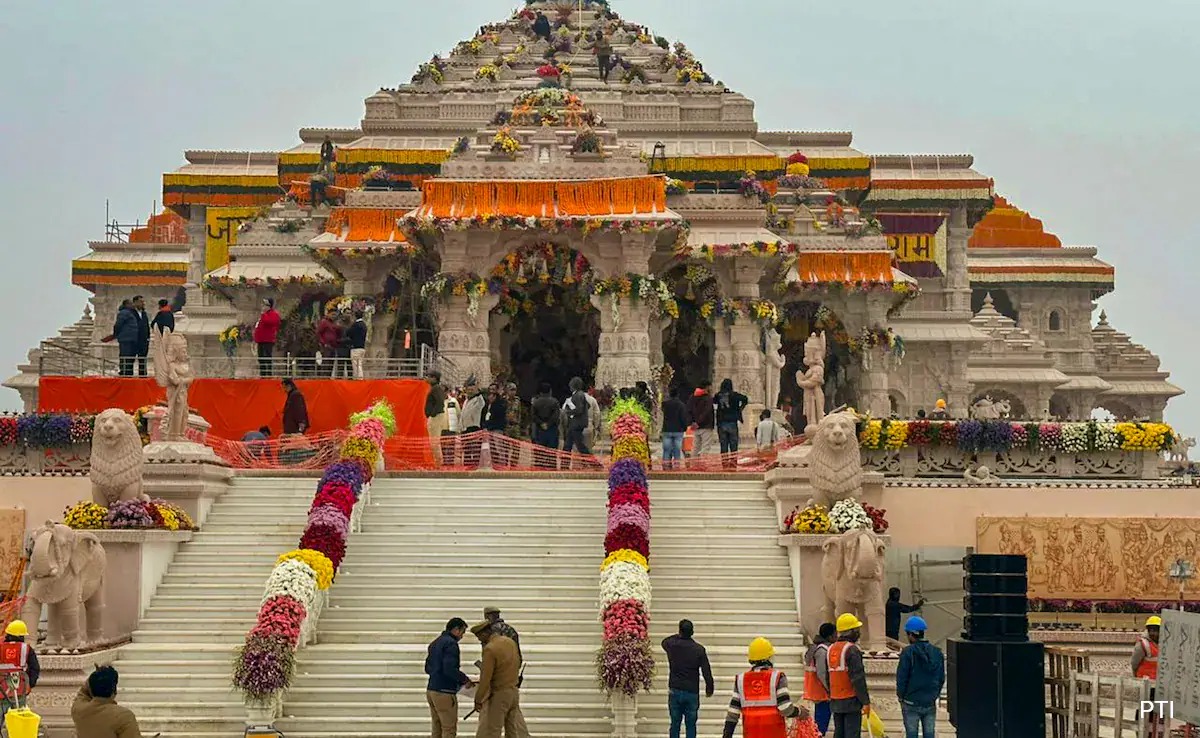India–US Trade Tensions Rise Over Steel and Auto Tariffs NMDC Limited reports a 38% drop in Q4 FY24 consolidated net profit RINL to Raise $23 Million Through Land Sales Amid Crisis

The grand opening of the Ayodhya Ram Mandir on January 22, 2024, marked not only a significant spiritual milestone but also a transformative economic chapter for Uttar Pradesh (UP). With a colossal investment of ₹1,800 crore, the Ram Mandir has become the second most expensive public monument in recent years, following the Statue of Unity. As the Pran Pratishtha ceremony unfolded, dignitaries including Prime Minister Narendra Modi and industrialists like Gautam Adani and Ratan Tata witnessed the realisation of a long-standing dream.
Construction and funding:
After the Supreme Court's landmark judgement in 2019, Ayodhya experienced an influx of investments from central and state governments, as well as donations from thousands of contributors nationwide. The Shri Ram Janmabhoomi Teerth Kshetra Trust, formed in February 2020, oversaw the construction and maintenance of the Ram Mandir. The trust received a staggering ₹3,500 crore in donations, and as reported by the Economic Times, 51.4% of the funds were used for construction, with the remaining earmarked for maintenance and other activities.
A notable allocation of funds was directed towards the 70-day 'Ramotsav,' and the creation of a 'Time Capsule' buried 2,000 feet under the temple, aimed at preserving the historical narrative of the Ram Janmabhoomi. The construction, which spans 70 acres with the main temple covering 2.7 acres and standing at 161 feet in height, has positioned the Ram Mandir as one of India's most expensive religious projects.
Economic impact and infrastructure development:
The Ayodhya Ram Mandir is not just a religious symbol but a catalyst for economic growth in Uttar Pradesh. The state government envisions an investment of ₹85,000 crore for Ayodhya's redevelopment over the next decade. The rise in spiritual tourism has spurred infrastructural improvements, with a focus on roads, railways, and hotels aiming for holistic and sustainable growth.
The foreign brokerage firm Jefferies predicts a comprehensive economic impact of $10 billion, transforming Ayodhya into a global religious and spiritual tourist hotspot comparable to Mecca and the Vatican. The new infrastructure includes a revamped railway station, a new airport, improved road connectivity and a 1,200-acre greenfield township.
Tourism potential and infrastructural enhancements:
India's tourism potential is significant, contributing $194 billion to the GDP in FY19. The Ayodhya makeover is expected to attract over 50 million tourists annually, creating a multiplier effect in sectors such as hotels, airlines, hospitality, and more. Ayodhya's new airport, operational at $175 million, is set to handle 6 million passengers by 2025. The railway station's capacity has doubled, and a greenfield township is in planning, all geared towards accommodating the anticipated influx of tourists.
The Ayodhya transformation has sparked significant interest from hotel chains like Indian Hotels Company, Marriott International, Sarovar, and Wyndham Hotels & Resorts. Approximately 50 hotel development initiatives are underway, establishing Ayodhya as a burgeoning focal point in the hotel industry. The region is poised to accommodate the surge in visitors with tent cities and dharamshalas.
Anticipated tourist influx:
The UP government anticipates a daily influx of at least 100,000 pilgrims following the Ram Mandir Pran Pratishtha ceremony, projecting a minimum of 20 million visitors in the next six months. This surpasses the footfall of religious tourism hotspots like the Golden Temple and Tirupati Temple. To facilitate the influx, the government has planned for various aspects, such as lodging, logistics, traffic management, and the deployment of electric buses.
Economic gains for Uttar Pradesh:
According to SBI Research, the Ram Mandir and tourism initiatives could contribute significantly to UP's tax revenue, potentially reaching ₹20,000–25,000 crore. The state could witness a doubling of tourist spending in the current year compared to 2022, with the total expenditure by tourists exceeding the ₹4 lakh crore mark. This substantial economic boost positions UP as a potential economic powerhouse in India.
Conclusion:
The completion of the Ayodhya Ram Mandir stands as a testament to India's cultural and religious heritage. Beyond its spiritual significance, the monumental investment in Ayodhya's infrastructure is unlocking unprecedented economic opportunities for Uttar Pradesh. The region is poised to become a global religious and spiritual tourism hub, providing a template for sustainable growth and economic prosperity. As the tourism industry flourishes, Ayodhya is on the path to redefining its narrative and contributing significantly to India's economic landscape.
Also Read : Global Capital Retreat: High Inflation’s Impact on Global Investments in Indian Real Estate Market India remains net steel importer despite 15% drop in Jan–Oct 2025 imports